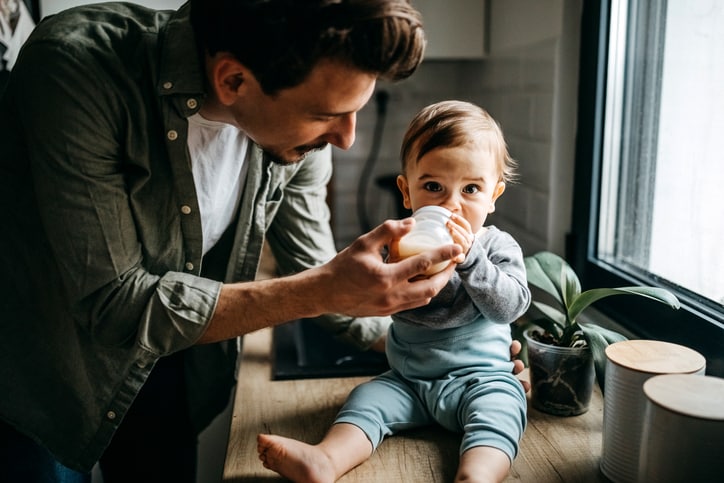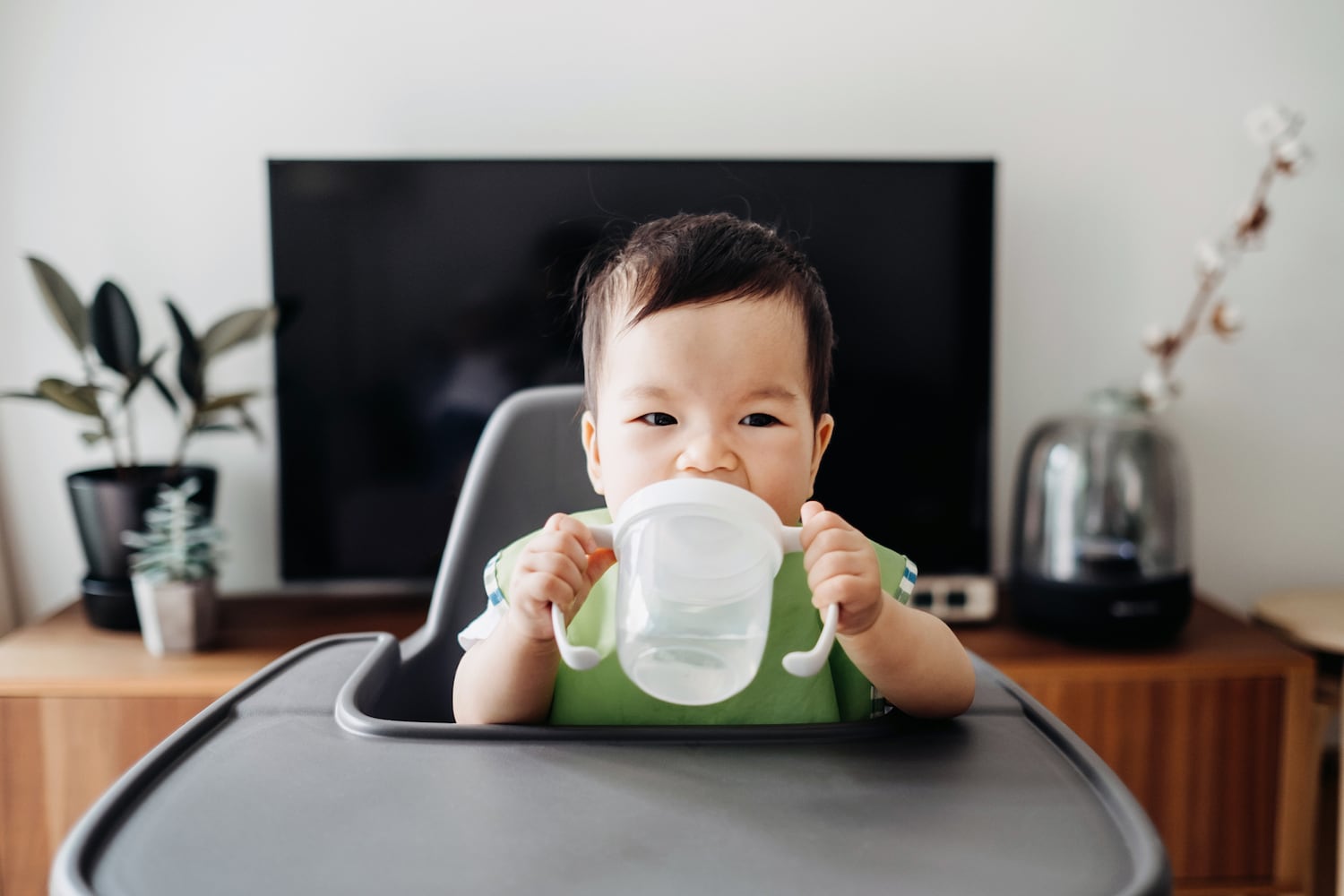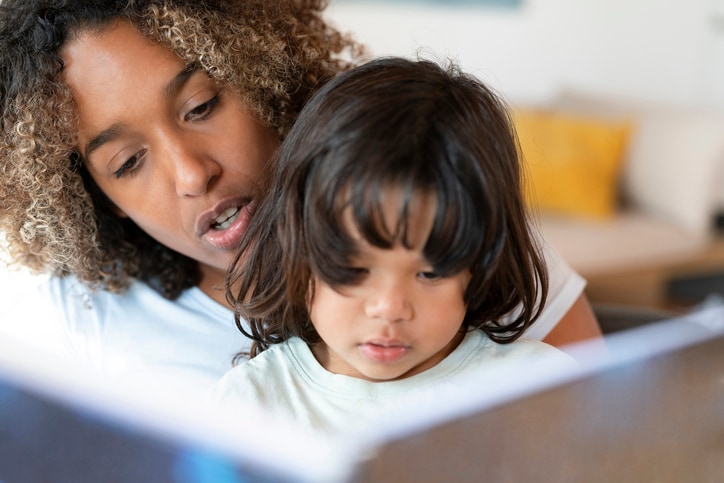We’ve all been there: You find a sippy cup from lunch that rolled underneath the high chair and you can’t remember exactly how long it’s been there. Or the baby didn’t finish their last bottle, but you don’t want to waste the milk, so you’re wondering if it’s safe to stick it in the fridge. Whether you’re a seasoned parent or caregiver or brand new to the game, it’s important to stay up-to-date on safe handling for all kinds of baby foods and products to prevent food waste and potential illnesses.
“Preventing foodborne illness is crucial for young children, given their still-developing immune systems,” says Chacha Miller, a pediatric registered dietitian and founder of The Cardamom Nutrition. “Their vulnerability to pathogens and bacteria increases the risk of severe complications compared to adults or older children.”
Practicing food safety with formula and breast milk, bottle prep, baby food and even sippy cups can help prevent illnesses and keep kids safe. Here, experts share what you need to know about preparing, storing and safely handling these items for young kids.
The facts on food poisoning in kids and infants
Each year, roughly one in six Americans gets sick from a foodborne illness, like salmonella or norovirus, resulting in 128,000 hospitalizations and 3,000 deaths, according to the Centers for Disease Control and Prevention (CDC). The World Health Organization (WHO) estimates that more than a third of worldwide deaths from foodborne illnesses occur in children under 5.
Foodborne illnesses pose extra risks to young kids because they are more likely to become severely ill. “Due to young children’s limited capacity to fight germs, they are more susceptible to illnesses and may experience more aggressive symptoms,” Miller explains. “Additionally, their smaller body size means they can lose fluids more rapidly, heightening the likelihood of further complications.”
Dehydration is a major concern for young children with any kind of foodborne illness. Other serious symptoms of foodborne illnesses include:
- Fever above 102 degrees.
- Diarrhea.
- Vomiting.
- Stomach cramps.
- Dry mouth
- Dizziness.
Luckily, parents and caregivers have some control when it comes to preventing foodborne illness. Dr. Jenelle Ferry, a board-certified neonatologist and director of feeding, nutrition and infant development at Pediatrix Medical Group in Tampa, Florida, says contamination of breast milk, bottles, formula or other items is most likely to occur during preparation and storage, so following safe handling practices can go a long way. Here’s what you need to know.
“Preventing foodborne illness is crucial for young children, given their still-developing immune systems. Their vulnerability to pathogens and bacteria increases the risk of severe complications compared to adults or older children.”
— Chacha Miller, a pediatric registered dietitian and founder of The Cardamom Nutrition
Food safety for breast milk, formula and bottles
Breast milk and formula are magical, nutritional foods for babies, but even they have the potential to be contaminated when not handled properly.
Freezing and thawing breast milk
Breast milk can be stored in the freezer (at zero degrees or colder) for up to 12 months, though using it within six months is generally recommended. When it’s time to thaw breast milk, the first step is selecting the right milk to defrost, says Nicole Peluso, a board certified lactation consultant and the manager of lactation services and education for Aeroflow Breastpumps.
“First in, first out is the best motto for which milk to choose; this means picking the milk that is the oldest. This ensures that, long term, the baby is using up milk systematically so you don’t have any milk sitting in your freezer that is really old,” she explains.
To safely thaw breast milk, Peluso recommends one of the following methods:
- Thaw on the counter..
- Thaw overnight in the refrigerator.
- Thaw in a bowl of lukewarm water or under running water.
Milk is considered thawed when there are no ice crystals left. “Avoid pots of boiling water or microwaving in order to prevent giving baby milk that is too hot,” Peluso stresses.
Note: You should never freeze baby formula, Ferry says.
Join Care for free
Storing and refrigerating breast milk or formula
Both breast milk and infant formula can be stored in the refrigerator, though the guidelines vary a bit for each. When storing infant formula in the fridge, Ferry suggests the following:
- Refrigerate formula immediately upon preparation.
- Most formulas can be stored safely in the fridge for 24-48 hours.
- Check your formula manufacturer’s label for detailed instructions.
When storing breast milk in the fridge, Chrisie Rosenthal, a board certified lactation consultant with The Lactation Network says to stick to these guidelines:
- Freshly pumped breast milk can be stored in the refrigerator for up to four days.
- Previously frozen breast milk can be stored in the refrigerator for up to 24 hours.
“The 24-hour window is based on when the breast milk is completely thawed in the refrigerator, not based on the time you moved it from the freezer to the refrigerator,” Rosenthal adds. “Breast milk should not be refrozen.”
Transporting breast milk and formula
Parents and caregivers can carry breast milk in the diaper bag without ice or a cooler if it was pumped fresh before they left the house, and the baby drinks it within four hours, Peluso says.
If the breast milk was previously frozen, Rosenthal says the milk must be used within two hours of bringing it to room temperature or warming. Otherwise, Peluso adds, it will need to be kept “in a container that acts as a cooler, like a Ceres Chiller.”
Prepared formula should be used within two hours or kept in a cooler or refrigerator, the CDC advises.
Both formula and breast milk can become contaminated once a baby has started drinking from a bottle. “Bacterial growth on any bottle nipple is a concern after a baby uses it,” Peluso explains. Whatever a baby doesn’t drink during a feeding should be discarded according to these timeframes from Peluso and Ferry:
- Discard formula one hour after feeding begins.
- Discard breast milk two hours after feeding has started.
Safety tips for preparing bottles
Whether you’re preparing a bottle of formula or breast milk, cleanliness is key. To keep bottles safe and bacteria-free, experts say to do the following:
- Clean bottles and all bottle parts immediately following each use.
- Clean the countertop or other preparation surfaces.
- Wipe down formula containers and check for proper labels and seals.
- Use small portions of breast milk or formula to prevent waste.
Most importantly, don’t forget to wash your hands! “Hand washing remains the most important and impactful way to reduce all types of infection,” Ferry says. “Always wash your hands before breastfeeding or preparing any bottles.”
“When offering juice in a sippy cup, it’s best to serve it alongside a meal and discourage prolonged sipping, as it may contribute to tooth decay and cavities. Likewise, milk should be served with meals or as a snack and should be discarded within one hour, as per American Academy of Pediatrics (AAP) recommendations.”
— Chacha Miller
Safe handling for sippy cups
There are two main ways to make sippy cup usage safer, according to Miller:
- Wash sippy cups immediately after each use.
- Try to use sippy cups during meal times only.
“When offering juice in a sippy cup, it’s best to serve it alongside a meal and discourage prolonged sipping, as it may contribute to tooth decay and cavities,” Miller explains. “Likewise, milk should be served with meals or as a snack and should be discarded within one hour, as per American Academy of Pediatrics (AAP) recommendations.”
Once a child has started drinking from a prepared sippy cup, it’s important not to put it back into the fridge or continue to use it for longer than an hour, Miller adds. This is to prevent bacterial contamination from their saliva.
“As for water, while it can be kept in the sippy cup for longer periods, it’s crucial to wash the cup at least once daily or if the spout comes into contact with unclean surfaces, like the ground,” Miller stresses.
Food safety when starting solids
Once young children are ready for solid foods, there are new safety guidelines to follow. For most foods offered during baby-led weaning, you can follow CDC guidelines for safe food handling. If you plan to use store-bought baby foods, pouches or homemade purees, here are some additional safety tips to keep in mind.
Storing and refrigerating baby food
Store-bought pureed baby food jars, containers or pouches do not require refrigeration if they’re unopened. However, once they’ve been opened, Miller says they need to be covered and placed into the refrigerator. Stick to the following guidelines for safe storage:
- Fruits or vegetables can be refrigerated for 2-3 days.
- Meats should be consumed within 24 hours.
“It’s advisable to check the package for specific storage instructions, as these may vary by brand,” Miller adds. Additionally, she recommends labeling stored baby food with both the date of initial use and the expiration date.
Ideally, it’s best to portion out small servings of baby food — Miller recommends prepping two- to four-ounce portions — and then place the rest into the refrigerator in order to prevent food waste. “Once a baby’s saliva has touched the food, it should be promptly discarded after the meal to prevent bacterial growth and potential contamination,” Miller explains.
How to thaw and warm up baby food
It’s common to freeze baby food, particularly if it’s homemade and prepared in large batches. To safely thaw frozen baby food, place it in the refrigerator for several hours or overnight, Miller says. “Avoid thawing or leaving baby food at room temperature on the counter to prevent bacterial growth.”
Baby food can be served cold or at room temperature; however, if you’d like to warm it up, Miller recommends two methods:
- Heating baby food in a saucepan on the stove over low heat.
- Microwaving baby food in short, 15-second bursts until warmed throughout.
“When using the microwave, be sure to check the temperature before serving to prevent accidental burns from uneven heating,” she cautions. The stove or microwave warming methods can also be used to speed up thawing.
The bottom line on safe handling for bottles, sippy cups and more
Foodborne illnesses can be serious, especially for young children, but parents and caregivers have the power to protect little ones in so many ways. “When handling a baby’s food, the best safety measure is maintaining sanitation,” Miller says. “This involves ensuring hands are thoroughly washed with warm, soapy water, surfaces are kept clean and storage containers remain intact without cracks or damage when storing baby’s food.”
You can always ask a pediatrician any questions you might have about safe feeding, food prep or storage. Lastly, if you aren’t sure if a food is safe to use or was stored properly, don’t be afraid to throw it out. As Miller concludes, “Although this may appear wasteful, it’s vital for preventing potential foodborne illnesses and associated complications.”





